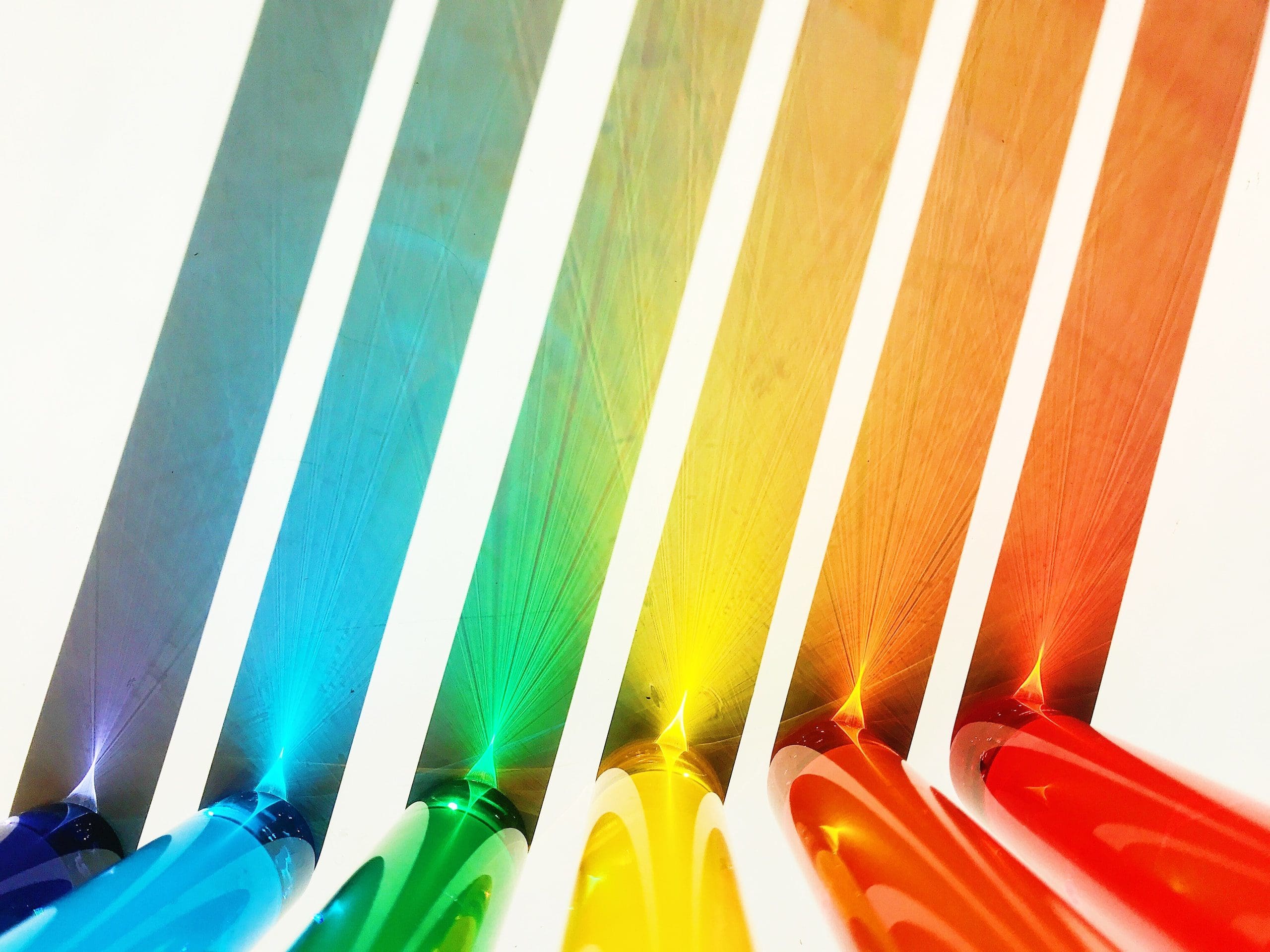Logo psychology | How shapes and colours influence us

In the dynamic world of branding, logos are the face of a company, communicating its values, personality, and essence. What many may not realize is that the shapes and colours chosen for logos play a profound role in shaping how audiences perceive a brand. Delve into the intriguing world of logo psychology, where each curve and hue is strategically selected to evoke specific emotions and associations.
Shapes: Communicating Beyond Words
-
Circles and Curves
Circles and curves exude inclusivity, unity, and community. They evoke feelings of trust and harmony, making them popular choices for brands that prioritize relationships and connection. Examples include the logos of Coca-Cola and Starbucks.

-
Rectangles and Squares
Rectangles and squares signify stability, reliability, and balance. They convey a sense of professionalism and order, making them suitable for brands that want to establish trust and credibility. Look at logos like Microsoft and LinkedIn for inspiration.

-
Triangles
Triangles are associated with energy, dynamism, and movement. Brands seeking to convey innovation and progress often opt for triangular logos. Think about the logos of Delta Airlines and Adidas.

Colours: Eliciting Emotions
-
Red
Red is a colour of passion, energy, and excitement. It grabs attention and stimulates action, making it a common choice for brands aiming to evoke strong emotions. Brands like Coca-Cola and YouTube utilize red for impact.

-
Blue
Blues signifies trust, stability, and professionalism. It exudes calmness and reliability, often chosen by brands in finance and technology. Barclays and Paypal are examples of blue-hued logos.

-
Green
Green represents growth, nature, and health. It evokes feelings of freshness and balance, making it ideal for brands focusing on sustainability and wellness. Look at the logos of Starbucks and Whole Foods.

-
Yellow
Yellow radiates positivity, happiness, and warmth. It catches the eye and conveys optimism, frequently used by brands that want to create a cheerful impression. The logos of McDonald's and IKEA showcase yellow's appeal.

-
Purple
Purple logos exude an air of creativity, luxury, and sophistication. The colour purple, often associated with royalty and opulence, carries a unique blend of power and elegance. From the regal emblem of Cadbury to the modern charm of Yahoo!, purple logos captivate attention and create a sense of intrigue.

-
Black and White
Black and white signify simplicity, elegance, and timelessness. They create a classic and versatile foundation for logos, adaptable to a range of brand personalities. Brands like Apple and Chanel epitomize this approach.

The Art of Strategic Combination
Logo designers often use a combination of shapes and colours to convey multifaceted messages. For instance, the combination of a circular shape and blue colour in the Facebook logo creates a sense of connectivity and trust.
Understanding Brand Identity:
Designers start by comprehending the brand's personality, values, and target audience. Is the brand bold and energetic or elegant and refined? This understanding guides the choice of colours and shapes that best encapsulate the brand's essence.
Colour Psychology:
Colours evoke emotions and associations. Designers select colours that align with the brand's message. For instance, a health-focused brand might opt for soothing greens, while an innovative tech company could embrace vibrant blues to signify trust and modernity.
Shape Significance:
Shapes communicate subtly yet powerfully. A luxury brand seeking sophistication might choose curves and intricate details, while a tech brand could use sharp lines for a futuristic vibe. Shapes influence how audiences perceive the brand's personality.
Harmonious Combination:
Designers blend colours and shapes to create a balanced and cohesive visual identity. A bold, triangular logo in deep red exudes energy, while a soft, circular logo in pastel shades conveys comfort. The harmony between colours and shapes amplifies the logo's impact.
Consistency Across Touchpoints:
A successful visual identity is consistent across all brand touchpoints. The colour and shape choices should seamlessly extend to websites, packaging, advertisements, and more. This consistency reinforces the brand's image.
Adaptation to Context:
The combination of colours and shapes should be adaptable to various contexts. Whether on a billboard or a mobile app icon, the logo should retain its recognizability and impact.
Testing and Iteration:
Designers test how colours and shapes interact through mock-ups and prototypes. They consider factors like legibility, scalability, and emotional resonance. Feedback and iteration refine the identity.
In the end, designers meticulously weave colours and shapes together to create a visual identity that encapsulates a brand's essence. This identity becomes the lens through which audiences perceive and connect with the brand, making colour and shape pivotal elements in the complex art of design.
Crafting a Lasting Impression
As you embark on logo design, consider the psychological impact of shapes and colours. Your logo is not just a visual element – it's a communication tool that influences perceptions and emotions. By strategically choosing shapes and colours that align with your brand's values and personality, you're crafting a logo that resonates deeply with your audience, leaving an indelible mark on their minds.
In the world of logo psychology, every curve and shade carries significance. Harness this understanding to create a logo that speaks volumes without saying a word, truly embodying your brand's essence.
